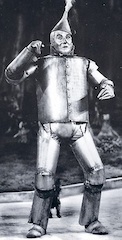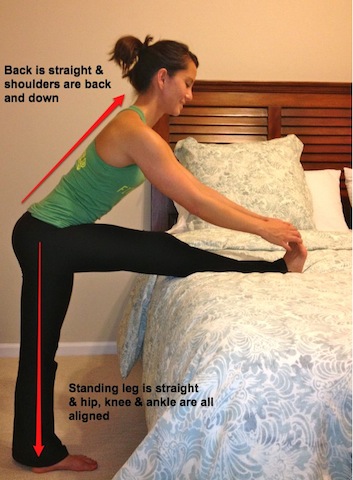Stretching is one of the most important, yet often overlooked, aspects of fitness and health.
We are all encouraged to eat well and exercise, to regulate body weight, and to lift weights to tone and build muscle. Yet, for some reason, many people don’t typically think of stretching to be a highly beneficial physical form of fitness even though no other exercise practice can deliver the significant results to your body, and create what you immediately feel after stretching. But lately, much has changed, as top athletes have come to realize the importance of stretching for both their physical performance, as well as aiding in competetive longevity.
What is Stretching?
Stretching is defined as a physical act of lengthening, distending, and creating space in an area through EXPANSION…this is an important word to remember, as stretching helps the body to open up and expand, by lengthening your muscles and helping to properly align your bone structure.
Stretching increases the range of motion at a joint and increases the flexibility of a muscle.
How Your Body Reacts to Stretching
 If your muscles are not used for a while, it causes a reduction in blood flow. Internally, your oxygen levels drop and metabolic wastes begin to build up. But, once you move into a stretch, oxygen-rich blood surges through the area and squeezes out the previously accumulated waste (such as carbon dioxide and lactic acid).
If your muscles are not used for a while, it causes a reduction in blood flow. Internally, your oxygen levels drop and metabolic wastes begin to build up. But, once you move into a stretch, oxygen-rich blood surges through the area and squeezes out the previously accumulated waste (such as carbon dioxide and lactic acid).
This helps to explain why people feel so good after stretching, it sends fresh oxygenated blood to muscles and flushes wastes from the areas being stretched.
Think of stretching as lubricating stiff joints and muscles, like oil for a rusty hinge. Similar to when Dorothy oiled the Tin Man!!
Benefits of Stretching
Most of us associate stretching with flexibility, yet for some reason many people still think that you need to already be flexible in order to stretch. As silly as that may sound to some, I hear it quite often. However, the truth is just the opposite – you need to stretch in order to become more flexible.
So, while flexibility is a benefit that occurs from stretching, it is definitely not the only benefit, more significant results include:
- relieves pain from prolonged sitting/standing
- improves blood circulation
- loosens tights muscles, commonly associated with aches
- aids in getting rid of stress tension throughout the body
- helps you relax and sleep better
- improves joint range of motion, as well as builds stronger joints
- helps prevent injuries during strenuous activity or injury bought on by exercise
Stretching Tips and Guidelines
- If it hurts, you have gone too far. You will feel the body’s natural reaction when a stretch is in place, so once you get there.. hold that position, and breathe deep.
- Take slow inhales and deep exhales while slowly moving deeper into the stretch. This will assist in sending oxygen to the muscles so they are not deprived, and can release the tension.
- Do not bounce. Ballistic stretching (bouncing in the stretch) is not recommended, and will create more potential for injury. Static stretching (being still while holding the stretch for ~15 to 30 seconds) is much more beneficial to relieving pain and will increase the range of motion in a joint space.
- Stretching is best done when the muscles are warm. Therefore, it is beneficial to do a light bout of exercise to move around and get the body moving before going into your stretching routine.
Why Stretching Should Be Part Of Our Daily Routine
Most of us are sitting, in some capacity (office desk/chair, driving, school, etc.), for 8+ hours each day. Whether you realize it or not, sitting for extended periods of time causes your muscles to stay in a tightened, contracted position, which causes limitations in your joint space. A limited joint range of motion often means your muscles are fooled into thinking that this tightness is the ‘new normal’. This signals the muscles to create ‘knots’ in areas that may begin to press on the nerves, which in turn causes the aches and pains felt throughout your body.
Additionally, sitting for long periods of time is horrible for your back. Your spine’s intervertebral discs are forced into constant compression when stuck in slumped sitting positions without movement because there is a decrease in blood flow to the area. Degeneration begins to occur, as the discs become thinner with compression from the spine. Breathing problems can also arise, as your rib cage and diaphragm are drawn forward and down the longer you sit in a slumped position.
The good news is that all of this can be easily fixed with some simple stretching each day! As you can see, stretching is for EVERYONE. Equally important for athletes and non-athletes, stretching needs to be done even more so by those who sit for the majority of the day.
To Get You Started…
Below are 3 stretches that I recommend EVERYONE start doing EVERYDAY. These are simple stretches you can do using your bed as an aid.
These 3 stretches are designed to release your spine (back), pectorals (chest), hamstrings (backs of the legs), quadriceps (front of the thighs)…so, big areas of focus for those sitting at a desk all day, lifting heavy objects and/or athletes training for long periods of time.
I typically do these twice a day, once in the morning (after I’ve been up and around) and then again at night before bed. Now, these are only 3 good ones that are easy, to help you get started. I do recommend doing a more complete stretching routine (should last about 15 minutes) each day and work in a variety of stretches throughout the week.
Hamstring Stretch
1. Stand facing the side of your bed. Square your hips and keep the feet directly straight forward. Place one leg on the bed.
2. Make sure your standing leg is straight with your hips, knee and ankle aligned…you dont want to be rounding spine too much.
3. Keeping your back straight, bend forward toward the foot that is resting on the bed. Keep moving forward until you feel a nice stretch in your hamstring of the extended leg.
4. Hold for 10 to 15 deep breaths, then switch legs.
Quad Stretch
1. Facing away from your bed, place one foot on top of the bed. Place both arms on the bed for stability.
2. Put a slight bend in your standing leg, just make sure your knee is aligned with your ankle. You do not want your knee bending too far past your ankle.
3. Keep your back straight, chest lifted, and slightly bend your standing knee until you feel a deep stretch in the front of your raised leg from your hip flexor through your quad.
4. Hold for 10 to 15 deep breaths, then switch legs.
Spinal Twist

1. Lying on the ground, take one leg and cross it over your body, keeping the leg bent at 90 degrees.
2. With your top leg crossed over and bent at 90 degrees, keep your bottom leg straight.
3. Now, take the arm that is on the same side of your body as your top bent leg, and raise it to 90 degrees, keeping your shoulder and elbow aligned.
4. Turn your head toward your raised arm.
5. Hold for 10 to 15 deep breaths, then switch legs.
Call or email me today to get started on a challenging and consistent exercise plan to increase flexibility as well as reduce your body fat and increase your energy levels. Let’s do this!



